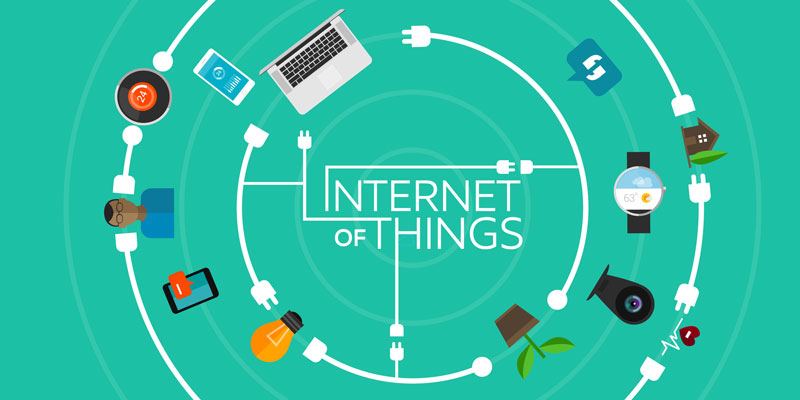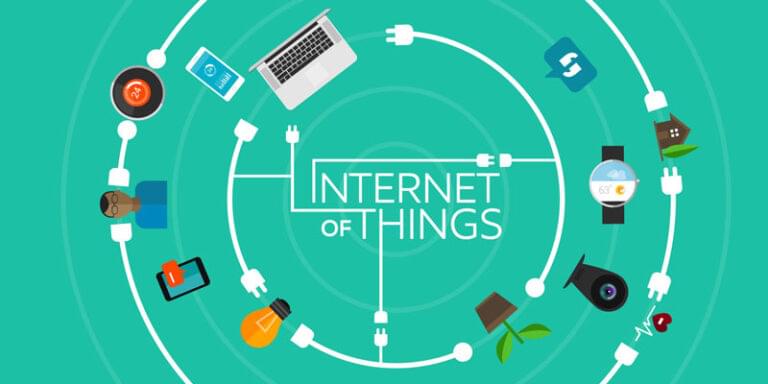The Internet of Things (IoT) is taking the world by storm. The millions of connected sensors and smart devices that are being deployed on a daily basis in homes, offices, cities and even on our persons are creating unprecedented opportunities in cutting costs, reducing energy consumption, improving efficiency and customer services, and better understanding how we interact with our environment.

The IoT, hailed as one of the biggest breakthroughs in the history of the tech industry, will soon be an inherent part of every aspect of our lives, from retail shops to hotels, to cars and airplanes and practically everything we interact with.
But this added utility comes with its own set of caveats and requirements, which need to be met and overcome with the proper solutions and approaches. Here are four challenges to expect in the future.

Security Challenges
IoT has already turned into a serious security concern that has drawn the attention of prominent tech firms and government agencies across the world. The hacking of baby monitors, smart fridges, Barbie dolls, drug infusion pumps, cameras and even assault rifles are portending a security nightmare being caused by the future of IoT. So many new nodes being added to networks and the internet will provide malicious actors with innumerable attack vectors and possibilities to carry out their evil deeds, especially since a considerable number of them suffer from security holes.
The more important shift in security will come from the fact that IoT will become more ingrained in our lives. Concerns will no longer be limited to the protection of sensitive information and assets. Our very lives and health can become the target of IoT hack attacks, as was shown in the hacking of pacemakers. Critical city infrastructure can also become a target, as the Ukraine power grid hack warned us last year.
There are many reasons behind the state of insecurity in IoT. Some of it has to do with the industry being in its “gold rush” state, where every vendor is hastily seeking to dish out the next innovative connected gadget before competitors do. Under such circumstances, functionality becomes the main focus and security takes a back seat.
Also, many IoT developers often come from an embedded systems programming background and are ignorant of the threats of IoT programming. They don’t necessarily have the knowhow and expertise to program for the hostile connected environment of the internet, and end up dishing out code that is reliable from a functionality perspective, but can easily be exploited remotely.
Scalability issues also contribute to the creation insecure IoT products. The fact is that many security solutions being used today have been created with generic computing devices in mind. IoT devices often lack the computational power, storage capacity and even proper operating system to be able to deploy such solutions.
Privacy Challenges
Some of the data that IoT devices collect are very sensitive and are protected by legislations such as the Health Insurance Portability and Accountability Act (HIPAA) in the U.S. and are fundamentally different from our browsing and clicking habits. Yet the necessary precautions aren’t taken when storing the data or sharing it with other service providers. Vendors and manufacturers must either discard this data or remove the Personally Identifiable Information (PII) to make sure that consumers aren’t damaged in case of data breaches.
Another consideration to take is that while data generated about a single appliance (such as a smart toaster) might not be sensitive per-se, yet when combined with data from other devices, it can reveal information such as the consumer’s life pattern, which can become very damaging if they fall into the hands of the wrong people. In many cases, criminals don’t even need to pry into your encrypted communications in order to obtain the information they want. A study by LGS Innovations elaborates on this issue and presents a DIY solution to protect IoT traffic and privacy.
Connectivity Challenges
Connecting so many devices will be one of the biggest challenges of the future of IoT, and it will defy the very structure of current communication models and the underlying technologies. At present we rely on the centralized, server/client paradigm to authenticate, authorize and connect different nodes in a network.
This model is sufficient for current IoT ecosystems, where tens, hundreds or even thousands of devices are involved. But when networks grow to join billions and hundreds of billions of devices, centralized brokered systems will turn into a bottleneck. Such systems will require huge investments and spending in maintaining cloud servers that can handle such large amounts of information exchange, and entire systems can go down if the server becomes unavailable.
The future of IoT will very much have to depend on decentralizing IoT networks. Part of it can become possible by moving functionality to the edge, such as using fog computing models where smart devices such as IoT hubs take charge of time-critical operations and cloud servers take on data gathering and analytical responsibilities.
Other solutions involve the use of peer-to-peer communications, where devices identify and authenticate each other directly and exchange information without the involvement of a broker. Networks will be created in meshes with no single point of failure. This model will have its own set of challenges, especially from a security perspective, but these challenges can be met with some of the emerging IoT technologies such as the Phantom protocol, or leveraging the success of other tried and tested models such as the blockchain.
Compatibility and Longevity Challenges
As an industry that is going through its baby steps, IoT is growing in many different directions, with many different technologies competing to become the standard. For instance, we currently have ZigBee, Z-Wave, Wi-Fi, Bluetooth and Bluetooth Low Energy (BTLE) all vying to become the dominant transport mechanism between devices and hubs. This will cause difficulties and require the deployment of extra hardware and software when connecting devices.
Other compatibility issues stem from non-unified cloud services, lack of standardized M2M protocols and diversities in firmware and operating systems among IoT devices.
Some of these technologies will eventually become obsolete in the next few years, effectively rendering the devices implementing them useless. This is especially important, since in contrast to generic computing devices which have a lifespan of a few years, IoT appliances (such as smart fridges or TVs) tend to remain in service for much longer, and should be able to function even if their manufacturer goes out of service.
I’ve already discussed how the concept of abstraction and separation of concerns can help overcome many of the compatibility challenges that lie ahead in the evolution of IoT. Other notable efforts in this regard include the creation of platforms such as Afero and the Apple’s HomeKit, which enable developers to focus on functionality while letting the platform take care of communication and security.
Frequently Asked Questions (FAQs) on IoT Development Challenges
What are the security challenges in IoT development?
One of the major challenges in IoT development is ensuring the security of the devices and the data they handle. IoT devices are often vulnerable to cyber-attacks due to their connectivity, which can lead to data breaches. Developers need to implement robust security measures, including encryption and secure communication protocols, to protect against these threats. Additionally, they must also consider the privacy implications of the data collected by IoT devices and ensure compliance with data protection regulations.
How does interoperability affect IoT development?
Interoperability is a significant challenge in IoT development. With a multitude of devices from different manufacturers, it’s crucial that these devices can communicate and work together seamlessly. This requires the use of standard protocols and interfaces, which can be difficult to implement due to the diversity of IoT devices. Developers need to consider interoperability in the design phase to ensure their devices can integrate with the broader IoT ecosystem.
What are the challenges in managing and analyzing data in IoT?
IoT devices generate a vast amount of data, which presents challenges in terms of storage, management, and analysis. Developers need to implement efficient data management systems to handle this data and extract valuable insights from it. This often involves the use of cloud storage and big data analytics tools. Additionally, the real-time nature of many IoT applications adds further complexity to data management and analysis.
How does power consumption impact IoT development?
Many IoT devices are battery-powered and designed to operate for extended periods without human intervention. This makes power consumption a critical factor in IoT development. Developers need to optimize their devices to minimize power usage, which can involve using low-power components, implementing power-saving modes, and optimizing software to reduce energy consumption.
What are the challenges in scaling IoT applications?
Scaling is another significant challenge in IoT development. As the number of connected devices increases, so does the complexity of managing and coordinating these devices. Developers need to design their applications to handle this scale, which can involve using distributed architectures and scalable cloud services. Additionally, they must also consider the impact of scale on performance and ensure their applications can maintain high levels of performance as the number of devices increases.
How does device diversity affect IoT development?
The diversity of IoT devices, in terms of their capabilities, operating systems, and communication protocols, presents a significant challenge for developers. They need to ensure their applications can support a wide range of devices, which requires a deep understanding of these different platforms and the ability to develop cross-platform solutions.
What are the challenges in ensuring the reliability of IoT devices?
IoT devices often operate in challenging environments and are expected to function reliably over long periods. This requires robust hardware design and rigorous testing to ensure the devices can withstand these conditions. Additionally, developers need to implement fault tolerance and recovery mechanisms in their software to handle any failures that do occur.
How does the cost factor into IoT development?
The cost is a significant factor in IoT development. Developers need to balance the cost of components, development, and operation against the value provided by the IoT application. This can be particularly challenging given the need for robust security, interoperability, and scalability, all of which can add to the cost of development.
What are the challenges in maintaining IoT devices?
Maintenance is a critical aspect of IoT development. Developers need to consider how their devices will be updated and repaired, particularly when they are deployed in remote or inaccessible locations. This requires the implementation of remote update mechanisms and self-diagnostic capabilities in the devices.
How does legislation impact IoT development?
Legislation can have a significant impact on IoT development. Developers need to be aware of the legal requirements in the regions where their devices will be deployed, including data protection laws, safety regulations, and standards for wireless communication. Non-compliance with these laws can lead to penalties and damage to the company’s reputation.
 Ben Dickson
Ben DicksonBen Dickson is a software engineer at Comelite IT Solutions. He writes about technology, business and politics across the web and on his Tech Talks blog.







